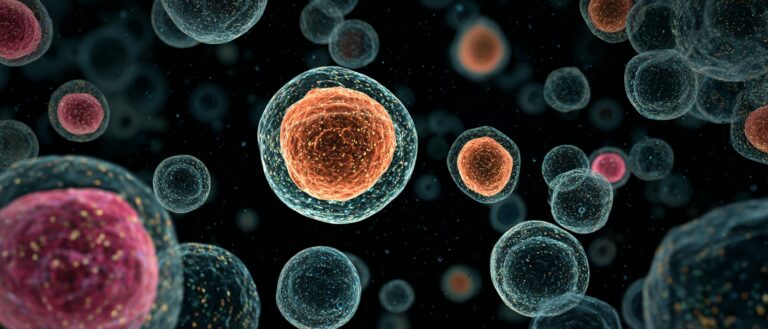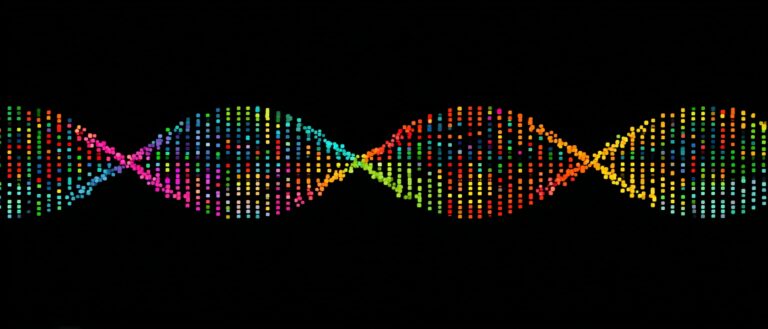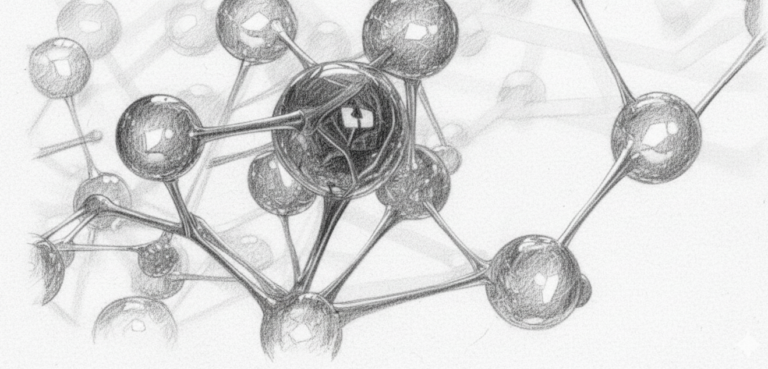Command Palette
Search for a command to run...
Follow-up on Yang Hui, a Top Student at the Chinese Academy of Sciences, Plagiarizing: Admitting to Borrowing and Apologizing to Fu Xiangdong

Recently, the incident in which Professor Fu Xiangdong of the University of California reported Professor Yang Hui of the Shanghai Institute of Neuroscience of the Chinese Academy of Sciences under his real name has become a hot topic in the academic circle. After Fu Xiangdong reported under his real name and Yang Hui denied it, the incident has come to a sequel.
Last week, Professor Xiangdong Fu from the Department of Cellular and Molecular Medicine at the University of California, San Diego, reported Professor Yang Hui of the Shanghai Institute of Neuroscience, Chinese Academy of Sciences, for academic plagiarism and fraud. The report became a hot topic on Zhihu and sparked heated discussion.
The direct cause of this report was two studies on treating Parkinson's syndrome by knocking down PTBP1.

Yang Hui's paper was published in Cell magazine in April (right)
On the one hand, Fu Xiangdong alleged that Yang Hui was suspected of plagiarism and falsification; on the other hand, Yang Hui responded by firmly denying it.
And yesterday, Yang Hui issued another statement, acknowledging that Fu Xiangdong's research has promoted the work of his team, thanking Professor Fu's team for their contribution to his work, and apologizing.
The ins and outs of plagiarism disputes
The entire incident involved a long timeline and a complicated process. The whole story is summarized as follows:
In 2013, Fu Xiangdong
The team first reported that the PTBP1-mediated gene regulatory network can efficiently transdifferentiate non-neuronal cells into neurons (see Cell 152:82-86, 2013);
At the same time, the team is also exploring the application of PTBP1-regulated transdifferentiated neurons in the treatment of neurodegenerative diseases.
May 17-18, 2018, Yang Hui
Yang Hui said that his team started this research on May 17-18, 2018.
On June 14, 2018, Fu Xiangdong
Fu Xiangdong was invited by Poo Muming, director of the Institute of Neuroscience, Chinese Academy of Sciences, to give an academic report.Unpublished research results on the treatment of Parkinson's disease,The scientific ideas, the entire experimental design, and the research results of this research work were introduced in detail;
At the same time, Fu Xiangdong also shared a collaborative research work that successfully applied anti-PTBP1 factor to the treatment of retinal diseases.
After the report,Yang Hui and several researchers had dinner with Fu Xiangdong, during which Yang Hui consulted Fu Xiangdong on many details of the experiment.
On November 12, 2018, Fu Xiangdong
The team submitted their research results to the journal Nature.
In early 2019, Yang Hui
Yang Hui submitted a paper to Nature, but it was rejected.
According to reviewer Gitler, the reason for rejection was that he and other reviewers believed that“The quality of the data, at least the data we saw at the time, was not high enough to be published in Nature.In addition, I thought the data and experimental design of the paper seemed a bit hasty and did not tell a complete story, so the paper was rejected. "
April 30, 2020, Yang Hui
The research was published in Cell, with the title “Glia-to-Neuron Conversion by CRISPR-CasRx Alleviates Symptoms of Neurological Disease in Mice”.
On June 25, 2020, Fu Xiangdong
The team's paper "Reversing a model of Parkinson's disease with in situ converted nigral neurons" was published in Nature.
It is worth noting that there is a sentence in the article:“While our work was undergoing peer review, conceptually related results appeared elsewhere.”(While our work was under review, conceptually related results appeared elsewhere).
The reference for this sentence points to a paper published by Yang Hui's team in the journal Cell on April 8.
On July 2, 2020, Fu Xiangdong
Fu Xiangdong reported Yang Hui by real name to the leaders of the Chinese Academy of Sciences, the Ministry of Science and Technology, and the National Natural Science Foundation of China for suspected plagiarism and fraud.
July 3, 2020, Yang Hui
Yang Hui responded to the report, saying that what Fu Xiangdong said in Neurology was not only different from Yang's article, but also different from the Nature paper published by Fu in 2020.
July 9, 2020, Yang Hui
Yang Hui issued another statement,He acknowledged that he had drawn on Fu Xiangdong's work and expressed deep apologies for his team's failure to communicate work progress with Professor Fu Xiangdong in a timely manner.
Yang Hui's latest statement: Thanks to Professor Fu and deep apologies
The exposure of the whole incident began with a real-name complaint letter from Fu Xiangdong on July 2.The letter reported that Yang Hui was suspected of academic misconduct such as plagiarism and falsification.
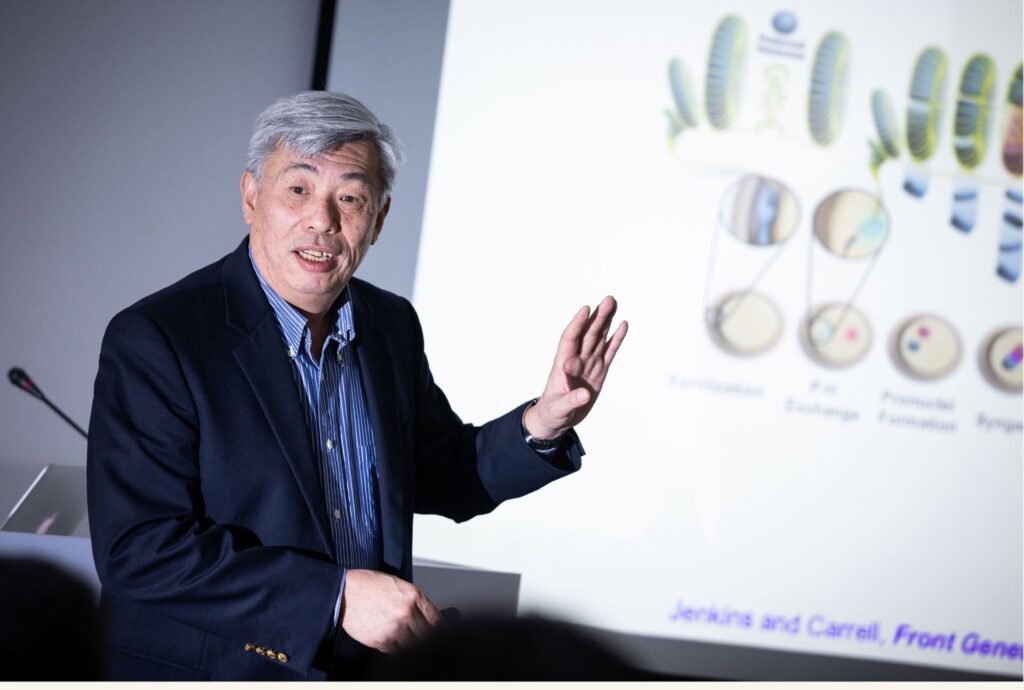
Fu Xiangdong explained that the results of his team's research, which took nearly ten years, were heard by Yang Hui in an academic report. Yang Hui then repeated the research work using another technology, obtained similar experimental results and published a paper.
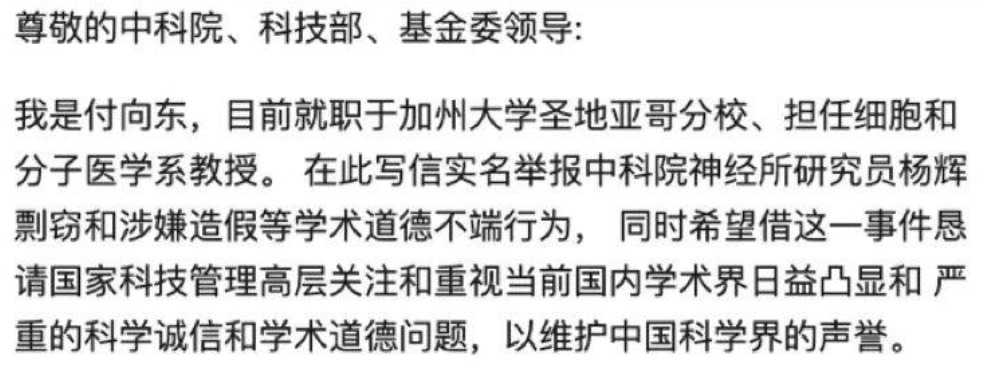
Immediately afterwards, Yang Hui responded on July 3, denying the three allegations.
He published a long article giving the detailed progress of his team's research to prove that the relevant research work had begun a month before Professor Fu Xiangdong's report.

While this matter was still being discussed in the academic circle and Zhihu, Yang Hui issued another statement.
In this statement, he acknowledged that the data shared by Fu Xiangdong at the Institute of Neuroscience a few days ago had promoted the team's work, and expressed deep apologies for not communicating the work progress with Professor Fu in a timely manner.
He also said, "I have written to the editor of Cell, hoping that Cell will publish an addendum as soon as possible to thank Professor Fu Xiangdong for his contribution to our work and our apologies. I hope that through this incident, my team and I will grow healthier. Thank you for your attention and support. We will work with our peers at home and abroad to rapidly promote the application of gene editing in disease diagnosis and treatment and make due contributions to people's life and health."
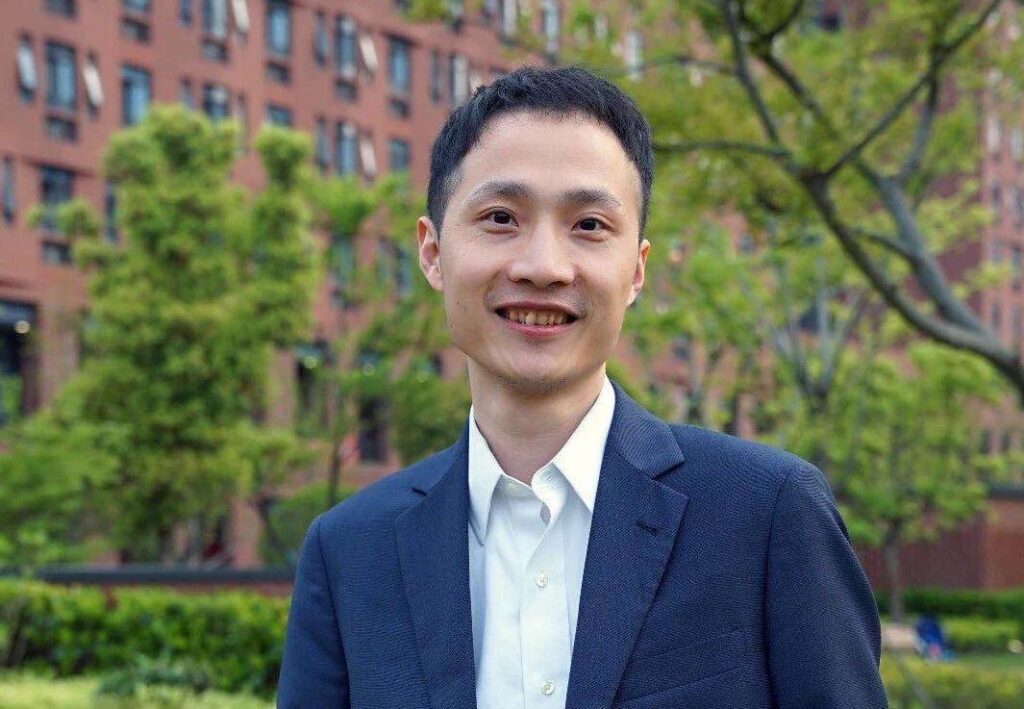
The following is the full text of the latest statement:
Description of "CasRx-mediated glial cell to neuron transdifferentiation for the treatment of nervous system diseases"
In March 2018, the journal Cell published a new gene editing system, CasRx. We realized that CasRx might be very suitable for transdifferentiation research and the treatment of various neurodegenerative diseases using gene knockdown methods. Since May 2018, we have used in vitro cultured cells to verify that CasRx can efficiently downregulate the mRNA of various genes at multiple disease targets.
On June 14, 2018, Professor Fu Xiangdong was invited to give a report at the Institute of Neuroscience, sharing unpublished data and introducing the work that reducing Ptbp1 in the substantia nigra of Parkinson's disease (PD) mouse models can convert glial cells into dopamine neurons.Professor Fu's successful experience has strengthened our confidence in Ptbp1 as an ideal target for glial cell transdifferentiation. We believe that CasRx editing technology is simple, efficient and specific, and it may be more direct and effective to directly perform transdifferentiation in the striatum, the dopamine action area. Such work should be very complementary to Professor Fu's work.Therefore, we used the established CasRx editing tool to knock down Ptbp1 in PD and retinal disease mouse models to achieve glial cell transdifferentiation.
We thought that Professor Fu's article was in the review process and would be published soon, so we did not realize that we should communicate with Professor Fu at that time.Later, because our laboratory had a complete gene editing-mediated neuronal transdifferentiation platform and worked closely with multiple laboratories, we were able to complete the relevant work in a relatively short period of time. It was not until our paper was accepted that we learned that Professor Fu's work was still under review.We sincerely apologize for not communicating our work progress in a timely manner, and express our sincere congratulations to Professor Fu on his work published in Nature.
The unpublished data shared by Professor Fu Xiangdong at the Institute of Neuroscience have indeed promoted our work. Therefore, we have written to the editor of Cell, hoping that Cell will publish an addendum as soon as possible to thank Professor Fu Xiangdong for his contribution to our work and our apologies.I hope that through this, my team and I will grow more healthily. Thank you for your attention and support. We will work with our domestic and foreign counterparts to rapidly promote the application of gene editing in disease diagnosis and treatment and make due contributions to people's lives and health.
——Yang Hui
July 9, 2020
Brief Analysis of Similarities in Papers
In short, the academic plagiarism in this case is that Yang Hui used a different technical approach to repeat experimental results similar to those of Fu Xiangdong's research.
According to a scholar familiar with the situation, two studies by Fu Xiangdong's team and Yang Hui's team, which are consistent in concept and principle, but use different brain regions and different methods to solve the same scientific problem.That is, by knocking down the PTBP1 protein, Parkinson's syndrome in mice can be treated.
Since Fu Xiangdong is a leader in the field of functional genomics, his research team used RNA interference to achieve the knockdown of PTBP1, and Yang Hui is experienced in the field of gene editing, so his research group used RNA editing to achieve this goal.
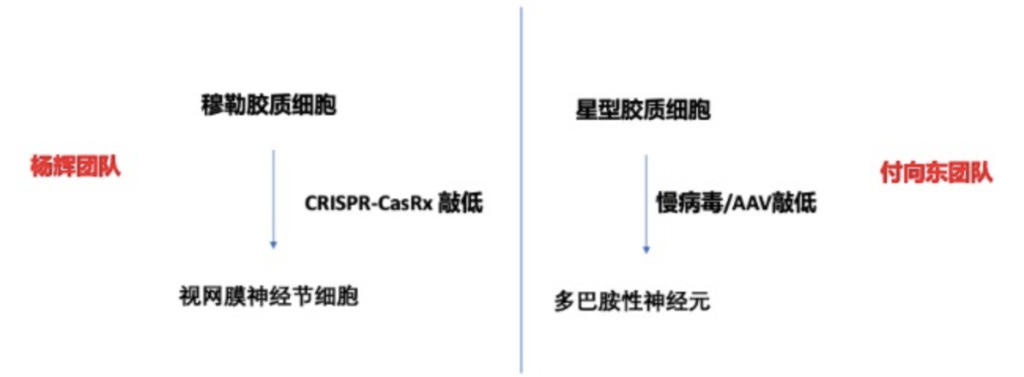
Link to Fu Xiangdong's paper:
https://www.nature.com/articles/s41586-020-2388-4
Yang Hui's paper link:
https://www.sciencedirect.com/science/article/abs/pii/S0092867420302865
Yang Hui’s first full response:
https://zhuanlan.zhihu.com/p/154497439
Full text of Yang Hui’s latest statement:
https://mp.weixin.qq.com/s/x6aPToSRRt4l6ZY3H-ZSmw
References:
http://zhishifenzi.com/depth/depth/9482.html
-- over--
